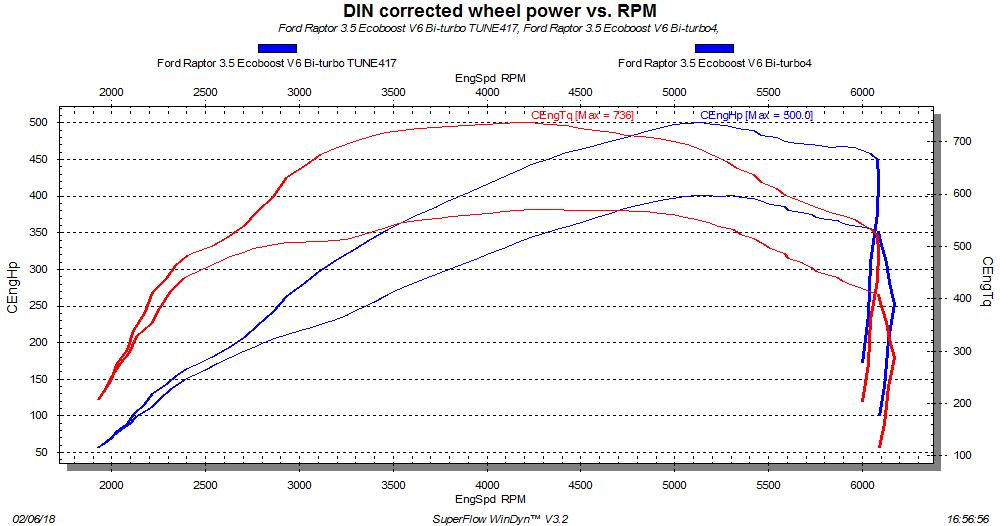EcoBoost engines were developed to provide Ford with an answer to the downsizing trend of the competitors. They were designed to provide power that could match larger naturally aspirated engines, but far better fuel efficiency and lower emissions.
Basically, they were supposed to be sensible.
However, this downsizing means that there are no V8 engines. Yes, in America also. Ford EcoBoost engines have no V8 option available. The biggest engine is a 3.5 l V6. This was a very bold move for Ford, especially since the V6 is supposed to propel some of the most revered vehicles in the US.
Still, Ford was confident that the EcoBoost was the future that it actually considers this engine lineup a proper replacement for 6l+ naturally aspirated engines, diesels and even hybrids. They even put it in the likes of the Ford GT – a successor to the legendary Ford GT40 and the top sports car from Ford at the moment.
However, if it was supposed to replace all of those old engines, then that means it is also in the heavy-duty machines such as the F-150 Raptor. That is a workhorse of a vehicle, but the figures were on the side of the small EcoBoost. It produces more power than the 6.2 l V8 it replaced.
Ford had an entire campaign which served to show how capable the V6 EcoBoost is. They had a series of videos where the Raptor was used to pull logs in the heaviest of terrains and it did it without a glitch.
Well, we got one of these now. GT Kraft experts under the watchful eye of Wim Essing developed a tune for the Raptor. We’ve tinkered with it aiming to get the most out of it while keeping it safe and reliable.
We started off by measuring its power and torque it came with. The spec sheet says that the V6 in the Raptor produces 450 hp and 691 Nm of torque. However, these are crankshaft figures. Figures at the wheel are always lower and our measurements showed that they are at 400.8 hp and 571 Nm of torque.
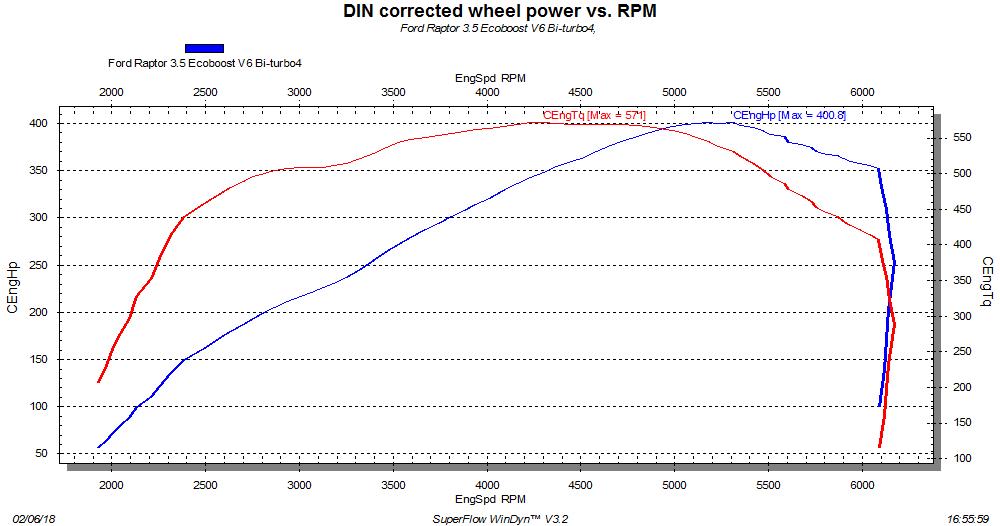
In total, we added three parts:
– cold air intake
– aftermarket exhaust
The cold air intake and exhaust can be sourced from several different aftermarket units manufacturers. Depending on the model we are tuning and the desired results, the customer can choose between several of these. Exhausts in particular can make a huge difference in sound and the choice depends on your preference. On the performance front, all of them are top notch, so the benefits will be at about the same level.
The GTK Performance ECU, on the other hand, is in-house developed by us to enhance the way that the OEM ECU works.
First of all, it takes into account the added benefits from the intake and exhaust. Our software setup tells the ECU to increase the turbo pressure. This way the engine gets more air.
In order to make the engine work as it should, we also adjust the software so that it increases the amount of fuel sent into the engine. This is very important since the ratio of air and fuel needs to be at exactly the right level in order to provide thorough combustion. This needs to be done across the rev range.
Lastly, the added air and fuel greatly increase performance, so that makes room and calls for an adjustment in ignition timing. This is done to ensure better combustion, but it also has another benefit – it makes throttle response noticeably faster. The Raptor reacts to the pedal push a lot faster after the advancement in ignition timing.
It is important to note that neither of these adjustments should be taken too far. The added fuel and air increase the levels of stress that the engine parts endure, so knowing the limits is essential.
Similarly, advancing ignition timing as much as possible gives great benefits and a much improved driving feel, but taking it too far can seriously damage the engine.
The intake and exhaust parts are also added to make the engine breathe easier.
This is why all our adjustments are done in increments and carefully monitored. We tested the car on our SuperFlow dynamometer and made sure each step of the way and the end product were as safe as OEM setup.
As explained, power and torque at the wheels were at 400.8 hp and 571 Nm. After the first set of adjustments, the figures got a very healthy bump. As you can see in the image below, the torque was at 691 Nm and the power at the wheels rose significantly to 477 hp.
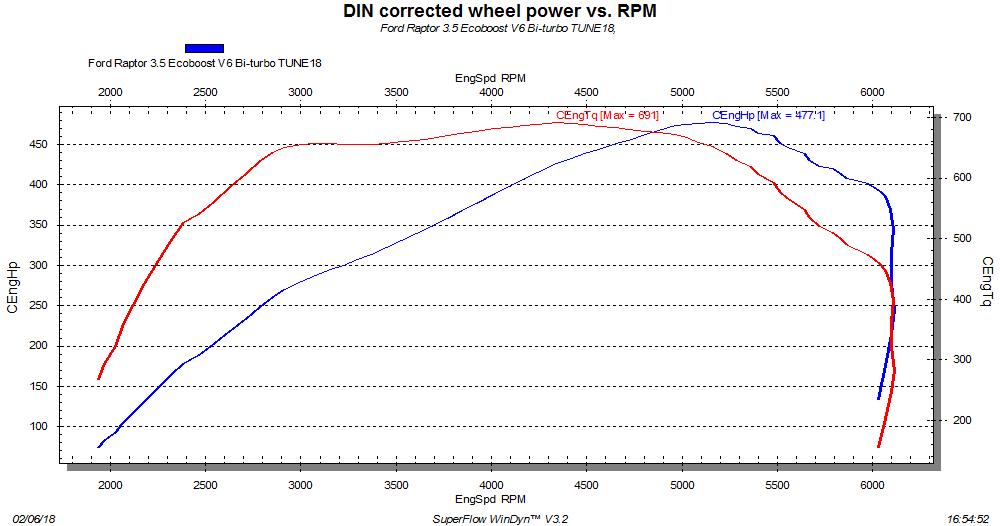
Data obtained from testing showed us that the torque curve could be significantly wider, so we performed further adjustments and increased the torque from under 3,000 rpm and top power. However, a small notch (2 Nm) from the top torque level was lost and we performed another set of adjustments.
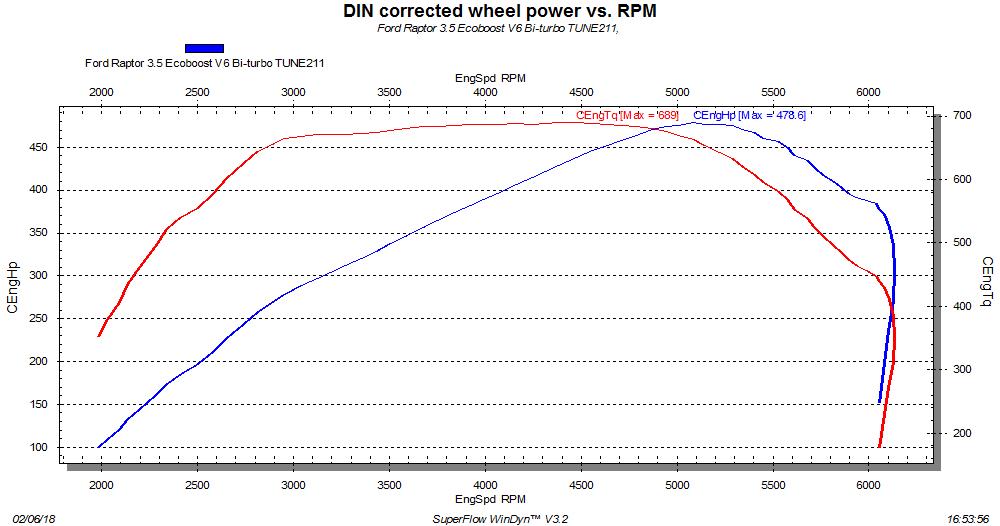
After this, we gained 700 Nm of torque and 481.3 hp. However, there was room for more.
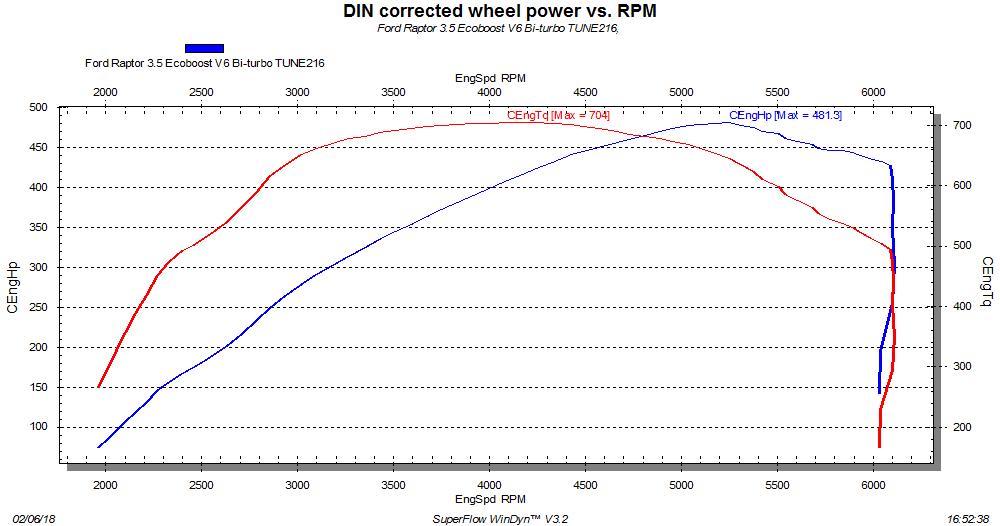
The final set of adjustments resulted in massive 736 Nm of twisting force and exactly 500 hp from the impressive 3.5 l V6 EcoBoost.
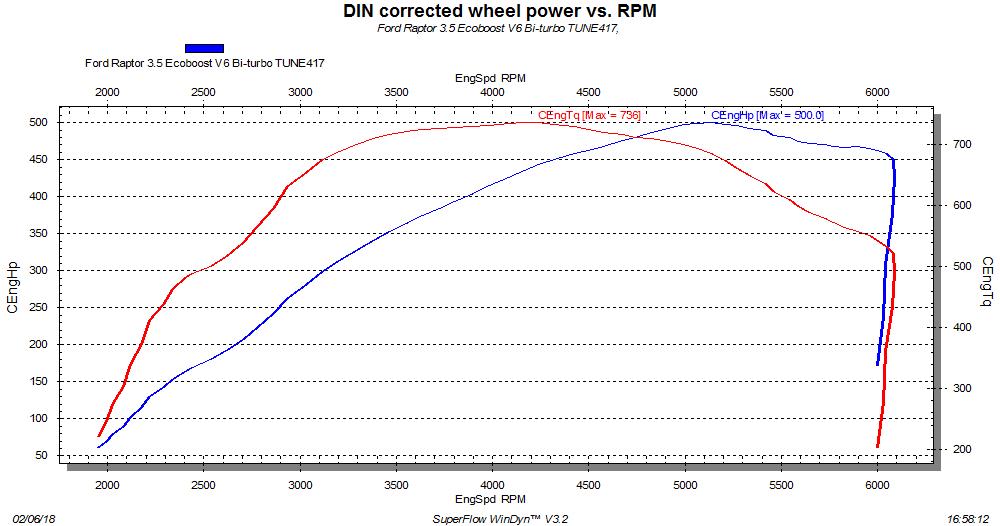
This is a huge improvement and one that is completely safe for the engine, gearbox and all the parts. Getting 100 hp and 165 Nm more without changing engine internals is a massive gain, but also a reminder why meticulous testing, extensive knowledge and experience and thorough dedication are imperative in the tuning business.
This success makes us wonder how far we could take the EcoBoost V6 with an engine rebuild.
Do you have a car with 2.7 or 3.5 l EcoBoost V6? We offer tailored tuning programs that will make your car significantly faster without jeopardizing safety and reliability. Contact us for more information.
